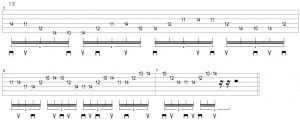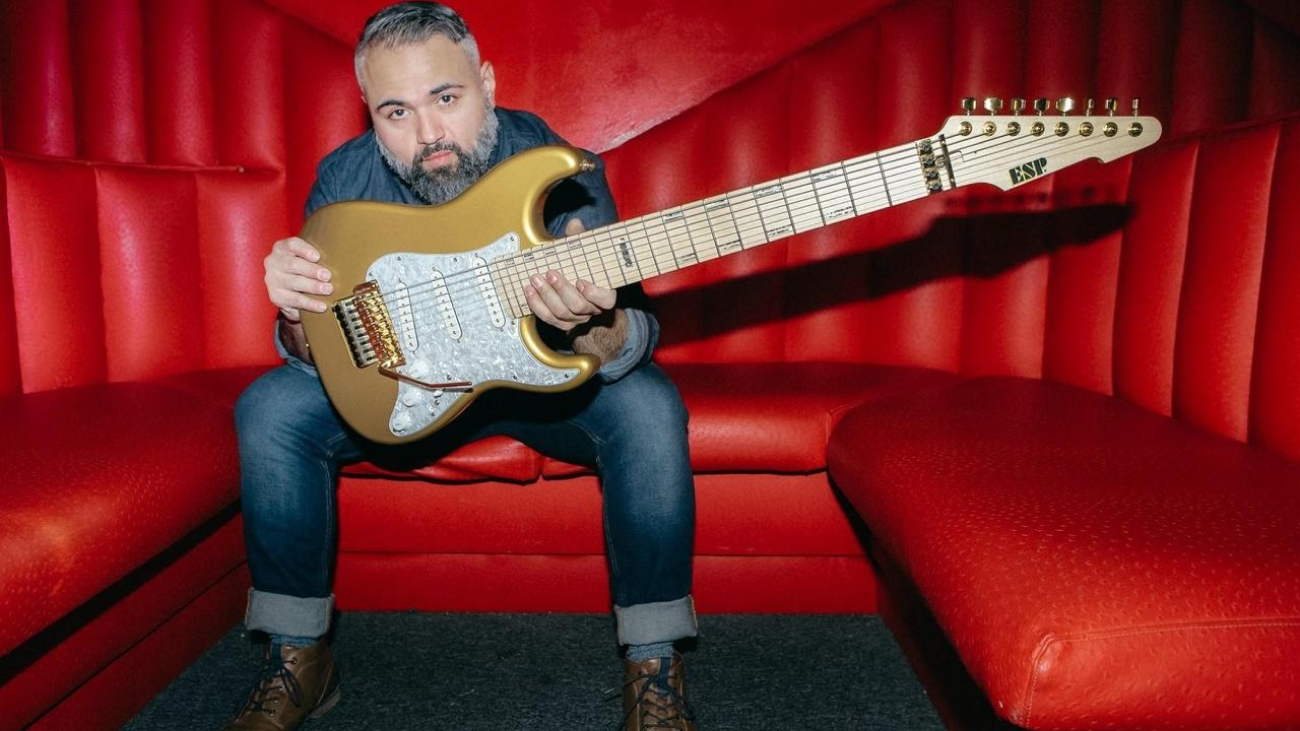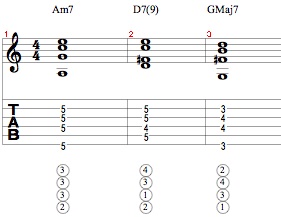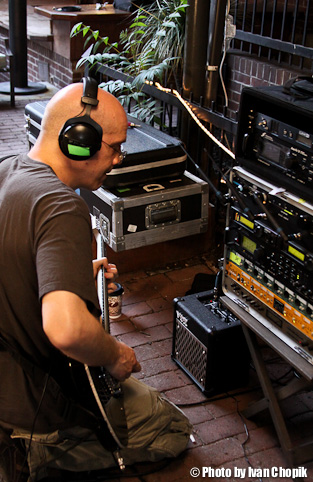Welcome back to the Technical Difficulties column! As I previously did with the “Day of the Dead” solo by Allan Holdsworth, today I am going to analyze and play a solo by one of my favorite guitar players of all time: Scott Henderson.
Scott is a phenomenal musician who has widely expanded the guitar language throughout the years, particularly in the jazz/fusion and blues context. He is known especially for his great sense of phrasing, touch, dynamic control, amazing time, and incredible attention for articulations. He has been recording and playing around the world in different collaborations and projects for more than twenty years, but he is mainly known for his work with Tribal Tech.
Tribal Tech recorded an album called Reality Check in 1995, which features the song “Stella by Infra-Red High Particle Neutron Beam.” I will play the second solo from this song and analyze some of my favorite lines in it. Pay attention to the wonderful guitar tone he uses and the overall control of the instrument that he has.
Here is the solo played by me. I used a relatively low-gain tone to make some of the articulations a bit clearer.
1
Note that the transcription below is of 5 select lines that I have chosen, not the entire solo. Listen to the recording several times and you’ll have no trouble picking out these passages. The transcription is followed by a discussion and analysis.
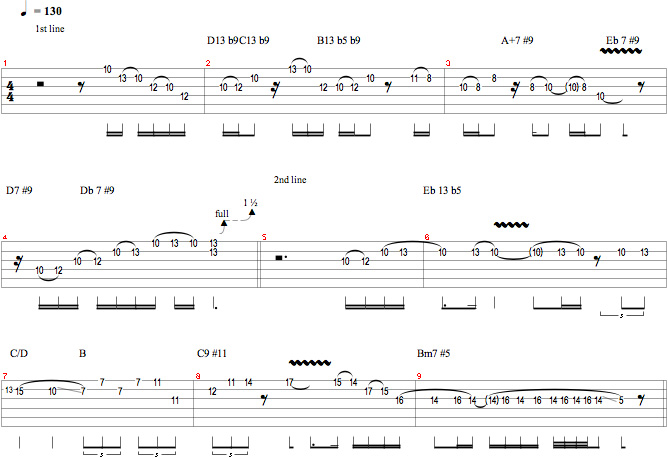
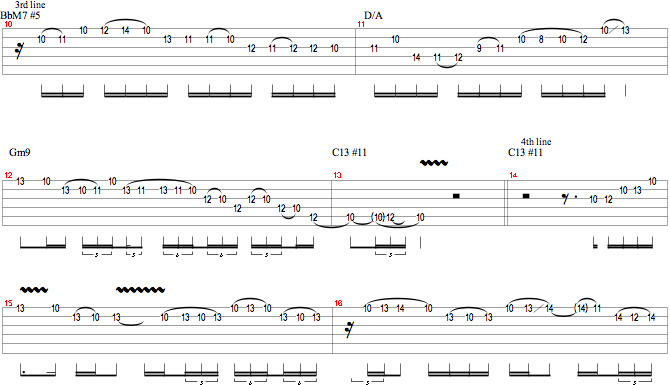
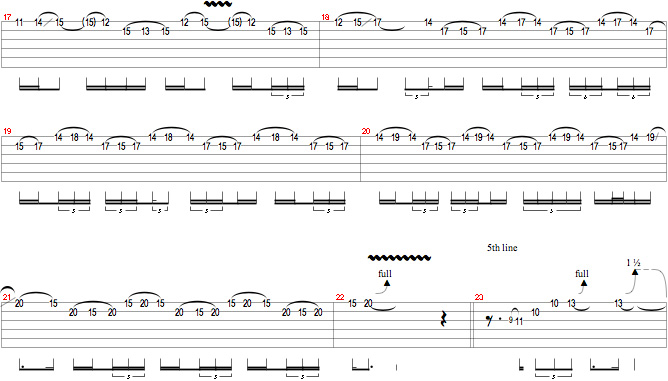


Line 1 – 0:01 – 0:10
The first line I want to talk about is a perfect example of a simple D minor pentatonic-based line that can become very effective when played with an original and “unexpected” rhythm. Great sense of time!
Line 2 – 0:16 – 0:22
The second line also starts from the same harmonic concept, but it develops in a very fascinating sounding way: he hits the first F# over the B chord followed by a B, a D# (B Major triad), and then the A (the 13th) over the C9 #11 chord to end with a A-B-A-B trill on the Bm7 #5 chord. The strong harmony change in this solo is accompanied a change in the rhythmic structure of his phrases, with an emphasis on triplets.
Line 3 – 0:23 – 0:30
The third line is one of my favorites. It is effective, fresh, linearly balanced, it builds tension, and it releases it perfectly at the end. It is a pretty jazzy sounding line that uses the third mode of the melodic minor scale during the first measure, the D major scale during the second measure until he hits the F (minor third of D), and the G minor scale in the third measure to end the line on a G (5th of C13 #11) in the fourth measure.
Line 4 – 0:30 – 0:45
The fourth line again starts as a simple D minor pentatonic-based line, but it rapidly develops with a mix of chromatics and four-note arpeggio ideas; mainly a series of major 9 arpeggios, except for the last three where the higher note moves up a half step and evolves into the last arpeggio formed with C, D, and G. Great effect to achieve the climax point of this solo, and once again take note of his amazing sense of rhythm!
Line 5 – 0:50 – 1:01
The fifth and last line (D minor pentatonic all the way through) is a mixture of different articulations and small details that add a special touch to the “resolution” of this solo.
As always I want to thank you all for reading my column, and I will hopefully see you next time. Until then!



